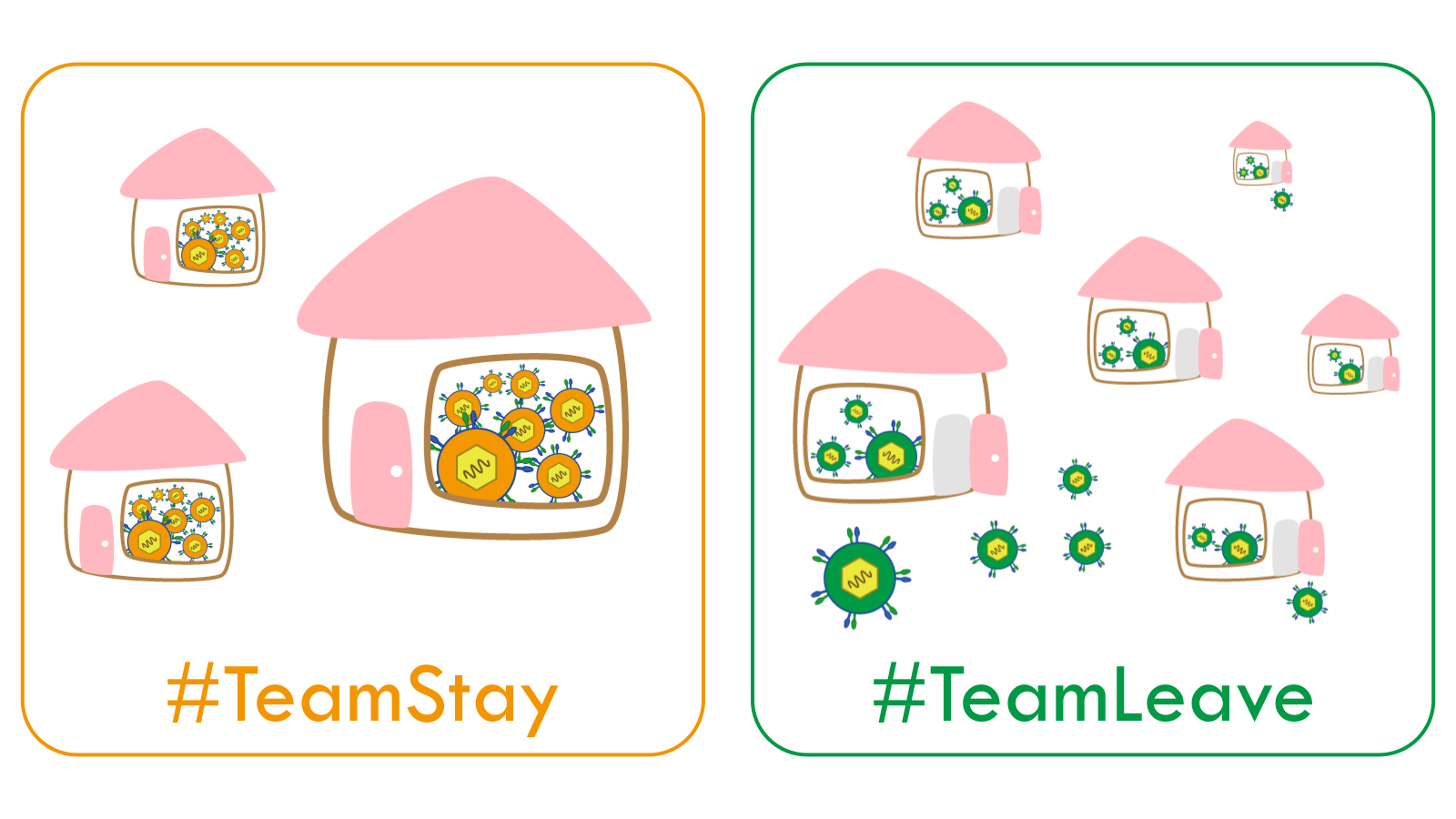研究成果 Research Results
- TOP
- News
- Research Results
- Stay or leave? A tale of two virus strategies revealed by math
Stay or leave? A tale of two virus strategies revealed by math
Mathematical modeling of behavior observed for two strains of hepatitis C quantifies their preference to either multiply or spread 2020.07.31Research ResultsLife & Health

Using a model to fit experimental data measured for cells infected with two strains of hepatitis C in the lab, researchers have quantified the viruses’ preferences to adopt either a stay or leave strategy. The stay strategy emphasizes keeping copies of genetic code in the cell to accelerate replication, while the leave strategy focuses on packaging and sending out genetic code to infect more cells.
As small and relatively simple as they may be, even viruses have strategies. Now, researchers in Japan report that they can evaluate two of these strategies through a combination of biology and math, providing a new tool for insight into viruses that could be used to develop better treatments.
Unable to reproduce on their own, viruses replicate by infecting a living organism’s cells and getting the cells to make copies of them. Two main options exist for copies of a virus’s genetic structure made in the cell: stay in the cell as a template for making even more copies or get packaged as a new virus and leave in an attempt to infect other cells.
Each option comes with trade-offs, so an individual virus’s strategy of how much weight to place on each one should directly influence the progression of an infection and any health problems it may cause.
“While such strategies are expected to be in play, showing the existence of the strategy itself has been difficult,” says Shingo Iwami, associate professor of the Faculty of Science at Kyushu University and associate investigator of the Institute for the Advanced Study of Human Biology (WPI-ASHBi) at Kyoto University.
However, as reported in the journal PLOS Biology, collaborative research led by Shoya Iwanami and Iwami at Kyushu University and Koichi Watashi at the National Institute of Infectious Diseases to mathematically model the behavior of two hepatitis C virus strains now provides a means to evaluate two such strategies.
While one of the studied virus strains causes severe and sudden symptoms, the other is a genetically modified version developed in the laboratory to increase virus production, which is important for creating stocks of viruses for the development of treatments and vaccines.
As an experimental base for the modeling, Watashi’s group measured characteristics of each virus’s behavior—such as number of infected cells and the amount of viral genetic code inside and outside of the cells—over several days for cells grown and infected in the lab.
Iwami and his group then developed a mathematical model with parameters to take into account key processes like the replication and release rates of the viral genetic information to explain the experimental data.
By finding the range of model parameters that reasonably reproduce the experimentally observed results, they could quantify differences in behavior between the two strains. In particular, they estimated that the fraction of replicated genetic code packaged by the lab-developed strain to make new viruses was three times that for the other strain, indicating the preference of a leave strategy for the former and a stay strategy for the latter.
“The stay strategy initially produces copies of the genetic code faster, while the leave strategy emphasizes newly infecting cells,” explains Iwami. “Though other mathematical models exist, ours is the first to evaluate these opposing evolutionary strategies.”
The current model does have some limitations, such as assuming some processes are constant and excluding some of the detailed biological processes, but for now, it provides a relatively simple way to gain an overall insight into two virus strategies.
“Such strategies may be common in other chronic virus infections, and understanding them could help us develop effective therapeutic methods to counter individual virus strategies,” Iwami comments.
###
For more information about this research, see “Should a viral genome stay in the host cell or leave? A quantitative dynamics study of how hepatitis C virus deals with this dilemma,” Shoya Iwanami, Kosaku Kitagawa, Hirofumi Ohashi, Yusuke Asai, Kaho Shionoya, Wakana Saso, Kazane Nishioka, Hisashi Inaba, Shinji Nakaoka, Takaji Wakita, Odo Diekmann, Shingo Iwami, and Koichi Watashi, PLOS Biology, https://doi.org/10.1371/journal.pbio.3000562
Research-related inquiries
Shingo Iwami, Associate Professor
Department of Biology, Faculty of Science
Contact information can also be found in the full release.
- TOP
- News
- Research Results
- Stay or leave? A tale of two virus strategies revealed by math































